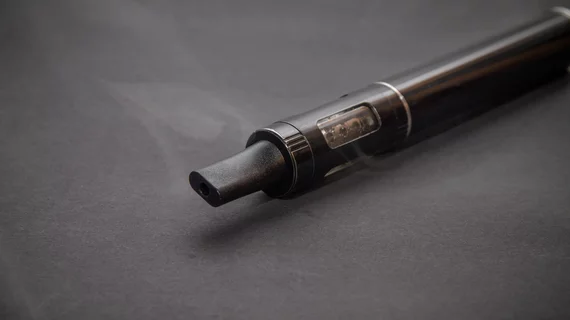The Radiological Society of North America has issued new guidance to help imaging professionals trying to treat an outbreak of deadly lung disease.
E-cigarette or vaping product use-associated lung injury (EVALI) has already stricken more than 1,600 individuals across the country, killing 34. Experts believe those numbers could worsen as more diagnosticians become familiar with the disease. Currently, more than 9 million adults use e-cigarettes in the U.S.
To help fill informational gaps on this emerging entity, RSNA published a new report on Thursday, Oct. 31, in Radiology: Cardiothoracic Imaging. Co-author Fernando Uliana Kay, MD, PhD, said the main purpose is to bring more attention to this issue.
“If I had to summarize the essence of the paper, it’s just to raise awareness. It’s out there killing people, so radiologists need to be aware of this entity,” Kay, from the Department of Radiology at UT Southwestern Medical Center in Dallas, told Radiology Business.
The report details recent EVALI cases from the literature, illustrating key radiographic and CT findings for one 24-year-old patient with a history of asthma. He presented to doctors with shortness of breath, productive cough, chest pain and a fever that was present for one week. A user of both e-cigarettes and marijuana, the individual also had high white cell and platelet counts.
X-rays—which are included in the report—showed ground glass and reticular opacities in the lungs, while a CT scan found pulmonary consolidation with relative subpleural sparing. Meanwhile, histologic specimens from his right lower lobe suggested lipoid pneumonia. Clinicians prescribed steroids after presuming a diagnosis of EVALI.
Kay stressed that tackling this disease will require all members of the care team including pathologists, epidemiologists, pulmonologists and emergency physicians.
“The radiologist is just one piece of the team,” he said. “Addressing this issue will require a broad base that involves all professionals in patient care.”
As more literature starts to trickle out on this emerging entity, Kay hopes that uncertainty will gradually dissipate.
“At this point, it’s a cloudy situation where you know the correlation between the behavior and the entity, but you don’t know exactly how the pieces are fitting together, or if you have a specific agent that is causing this,” he said. “It’s still a work in progress. That’s the main factor that might be causing some anxiety or uncertainty for radiologists.”
The CDC also previously released specific tips for radiologists involved in treating EVALI, as did the American Journal of Roentgenology.

